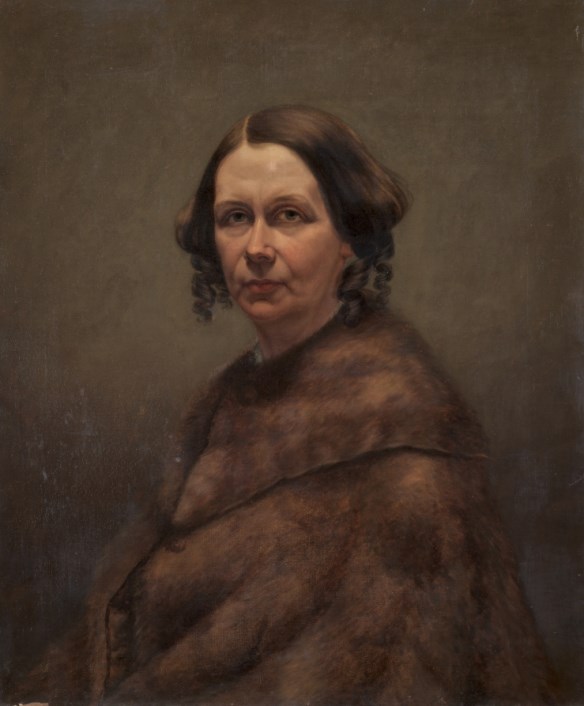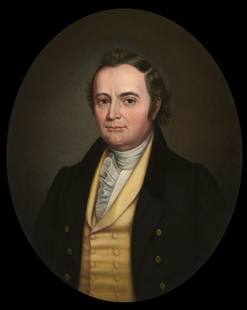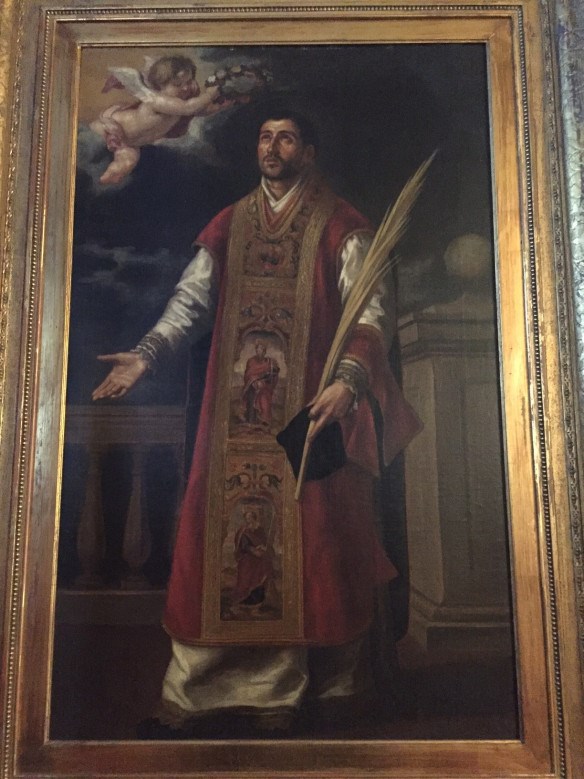Last updated: July 22, 2020
Article
Caroline Ransom: Artistic Endeavors on the Western Reserve

Smithsonian Institution
Throughout the Garfields’ Mentor, Ohio home, many beautiful pieces of art are on view for visitors to enjoy. The elegant Reception Hall is a small gallery in itself, with pieces including portraits of James and Lucretia Garfield, a Japanese temple gong, and a large piece entitled The Old Spring House (Flirtation). One could spend many hours admiring the artistic skill in the home, including that of the family (the tiles around the dining room fireplace, as well as the pencil drawings on the second floor, are the work of Lucretia Garfield and her children). The work of one artist in particular, Caroline Ransom, is especially prolific in the Garfield home, and worth learning more about.
Caroline Ransom was a portrait artist who was also a friend of the Garfields, getting to know them in Washington, D.C. as did several of her contemporaries. Many diary entries, letters, and other primary sources illustrate the closeness of Ransom’s relationship with the family. James and Lucretia, for their part, had interests in the arts throughout their lives. Both attended the 1876 Centennial Exposition in Philadelphia, James was an early regent of the newly established Smithsonian in Washington, D.C., and Lucretia had been a student illustrator at a publication of the Western Reserve Eclectic Institute.

Cleveland Museum of Art
Ransom was a native Ohioan, born in 1826 in Newark, OH. Soon after Caroline’s birth, the family moved and her father established a settlement on the Western Reserve centered on a mill. However, the businesses that her father built had failed by 1864, and the family, now poor, moved to Cleveland. Caroline, in the meantime, had begun pursuing her interest in art in earnest.
On the Western Reserve, though, fine art was difficult to come by. In the 1850s, Ransom had the chance to study with landscape artist Asher B. Durand, who was part of the Hudson River School of painters, in New York. After a few months of study, Durand recommended that Ransom focus on portraits instead—so she began studying with a series of other artists, the first being Thomas Hicks, a portrait and genre artist. While studying with Hicks, Ransom painted a portrait of a Mrs. Goss that is now in the archives of the Cleveland Museum of Art.

U.S. House of Representatives

NPS

NPS

NPS
In addition to James Garfield, Ransom painted several other portraits of Garfield family members that are displayed in the historic house: in the parlor is a portrait of Eliza Ballou Garfield, James’ mother, and in the Winter Bedroom are two portraits of Garfield children who died at a young age: Eliza Arabella (‘Little Trot’) and Edward (‘Neddie’). Ransom also did a painting of Falstaff, a popular character from several of Shakespeare’s plays, which now hangs in the second floor hallway. Supposedly, Garfield remarked to Caroline Ransom that he was unsatisfied with all of the portraits of Falstaff, thus prompting the artist to create her own interpretation. All of these paintings can be viewed on a tour of the home here at James A. Garfield National Historic Site.
The amount and variety, as well as the content, of the artwork in the Garfield household is a testament to the artistic and scholarly inclinations of the family, the many friendships with artists and creative types that the Garfields enjoyed, and the interesting, and often surprising, anecdotes about this remarkable family. As a bold, promising, and talented artist, Caroline Ransom’s close and lasting friendship with the Garfields is no surprise.
Written by Katelin McArdle, Park Ranger, James A. Garfield National Historic Site, October 2015 for the Garfield Observer.
